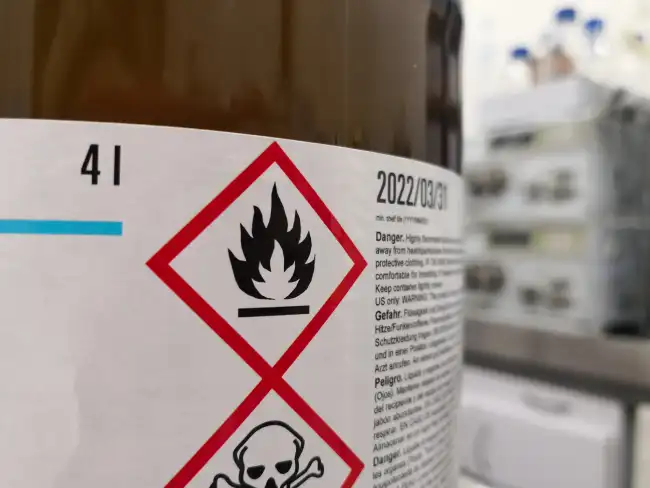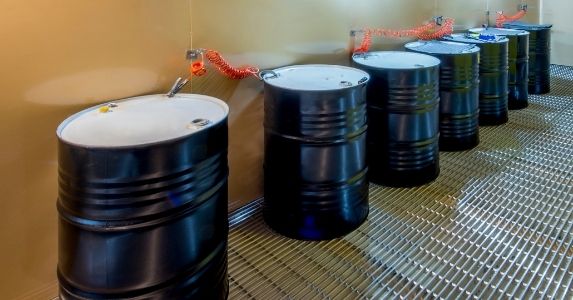Lab Managers: How to Keep Your Cool for Lab Fire Code Compliance
Laboratory fire code safety compliance is crucial. Its importance, especially to life sciences, healthcare, and higher education laboratories, is only going to grow. Unfortunately, many operational and environmental, health, and safety (EHS) managers don’t even begin to understand all their lab fire code obligations.
In fact, frequently, managers and staff members don’t know that fire codes even exist. That was the topic of discussion at a recent webinar, “Lab Fire Code Compliance Crucial for Safe, Steady Operations,” led by Triumvirate Environmental’s EHS consulting manager Eric Littlefield. As an experienced professional, Littlefield works closely with life sciences, healthcare, and higher education clients to make their operations safer and more efficient.
Fortunately, as Littlefield explains, it’s absolutely within even the busiest manager’s capabilities to be fully informed on—and in compliance with—all pertinent fire codes in their facilities.
Lab Fire Code Noncompliance: Consequences
Without preparation and knowledge, labs face:
- Failed fire marshal inspections
- Fines and sanctions
- Operational shutdown
- Incidents, ranging from minor ones to disasters
- Bad publicity—and brand damage
- Loss of employee morale
Post-COVID, fire inspections are picking up, and they are becoming stricter, and come with fines. Given the frequency of chemical incidents nationwide, it’s likely the penalties will only become even more severe.
Danger Zone and Fire Compliance
The risks are typically greatest in laboratories that apply solvents—or perform cell research using highly flammable chemicals and cultures. Also, when stored in bulk, some substances create greater incident risk.
Unfortunately, as Littlefield explains, managers often don’t understand fire codes, and can't see how these guidelines apply to their lab areas. Sometimes, organizations even establish labs in facilities that weren’t built according to proper safety and space specifications.
Littlefield mentions how sometimes facility designers aren’t aware of the actual building operations. They design a facility as just a shell for operations, and as he puts it: "Then they threw some laboratory benches in there, and called it a laboratory.”
Issues arise when safety considerations and business occupancy designations don’t match the actual lab operations. For proper compliance, managers must actually review the state of the facility and know exactly what operations the staff are performing.
As Littlefield says: “We have to look at how the building was designed—the different firewalls and fire protection ratings, the distance to exits, the means of egress for the actual operations, and the levels of hazardous materials that they are storing on-site."
NFPA 45: Fire Compliance Backbone
The primary guidance source is the National Fire Prevention Association (NFPA), which provides the NFPA 45 Standard on Fire Protection for Laboratories Using Chemicals. Littlefield points out that interpreting those rules, however, is up to the local inspectors—and there may also be state, municipal, or other guidelines that they will enforce.
And then there are the issues of the lab workplace classification, which will determine how the NFPA rules are interpreted and applied. In some districts, a worksite with chemicals may be deemed a “business occupancy.” Or, as Littlefield clarifies, if the site holds too many hazardous materials, it ceases to be a lab and is now considered “a high-hazard storage occupancy.”
Other occupancy factors can include space square footage and the specific municipal or regional regulations. For instance, in densely populated areas like New York City or Boston, there are many stringent fire code restrictions not applicable in other zones.
Proper fire code compliance also involves another key concept: maximum allowable quantities (MAQs). As this blog has previously explained, MAQ guidelines stipulate the total amount of hazardous chemicals that can be used or stored within a facility. They are the basis for any organization’s chemical inventory management best practices.
Other fire compliance enforcement factors can include an organization’s:
- Life safety code
- Fire ratings
- Types and volumes of hazardous materials, stored per square foot
As we can see, even compliance basics are a complex matter.
Control Areas and Minimal Requirements
Littlefield also covered the essential idea of a control area—or a building compartment designed to control the spread of fire. It is the basic conceptual unit for managers when planning fire safety code compliance.
For instance, when laying out a flammable storage control area, managers must ensure it is optimized for blaze containment and elimination. This requires installing appropriate firewalls, flame-resistant doors, and a fire suppression system.
When embedding multiple control areas on a floor, managers must strictly adhere to relevant MAQ guidelines. The rules will limit the number of control areas permissible on any given floor. Additionally, control area rules for basements and for building stories also vary: for example, a basement cannot host a flammable storage control area.
Above ground, which story a lab is in affects the types and numbers of control areas permitted there. What passes on the third story may be forbidden in the fourth story. And, as Littlefield observes: “As your number of floors increases … the number of control areas that you have also decreases.”
Many Details in Fire Code Compliance
Littlefield also reviewed a number of other compliance factors, which include:
Installing basic safety systems, such as:
- Sprinklers
- Fire detectors
- Fire doors and firewalls
- Evacuation routes
Electrical requirements, which depend on:
- On-site chemical types
- The lab's electrical wiring types
- The building's special outlets (or grounded) outlets
Drainage requirements, which can include:
- A dedicated system that funnels hazardous chemicals away from regular drainage and sewer systems—and away from the public
- Special spill containment control systems
- Unique building configurations to connect hazardous storage areas to spill containment zones
- On-site tanks to collect chemicals for later export and disposal
Addressing distinct types of combustible chemicals by:
- Classifying hazardous chemicals by their type and volatility (aerosols, flammable liquids, or solids, etc.)
- Factoring in MAQ rules to prevent mixing reactive chemicals
- Using diverse types of storage containers (cabinets vs. closets)
Training demands, which involve:
- Adherence to applicable Occupational Safety and Health Administration (OSHA) rules
- Educating employees about on-site flammable chemicals
- Chemical hygiene training
Step One to Compliance
For those looking to start on the road to lab fire code compliance, Littlefield offers suggestions. First, managers must ascertain what chemicals are stored and used on-site. “The best thing you can do, or the number one priority thing you can do, is have a chemical inventory,” says Littlefield.
Once they have an accurate facility chemicals snapshot, managers can create hazardous material storage plans and other compliance systems. To that end, managers can leverage existing cloud-based, mobile, data-driven chemical inventory systems. These can read accurate and current bar codes, create reports, and enable safety documentation automatically. This way, their team members will easily respond to emergencies quickly, safely, and efficiently.
But, he says, fire safety is too important for managers to rely on disparate manual paper-based inventory systems, or even Excel sheet lists. These legacy systems are cumbersome, difficult to maintain, and frequently allow errors to creep in. So, a flexible chemical inventory software solution, with cloud access and data-updating capabilities, is essential.
Partnership for Lab Fire Code Compliance
Littlefield acknowledges compliance is often a time- and resources-consuming burden. It’s also something managers simply can’t ignore. One way of simplifying compliance is to turn to a trusted and proven environmental, health, and safety (EHS) partner to assist.
With such a partnership, trained fire code and flammable chemical management experts can go on-site to assess the lab or labs, map out work areas, and create a compliance plan. They can also assist in filing for applicable permits and in the creation of training and safety programs.
Triumvirate Environmental is such a partner. Talk to us today to learn more.






